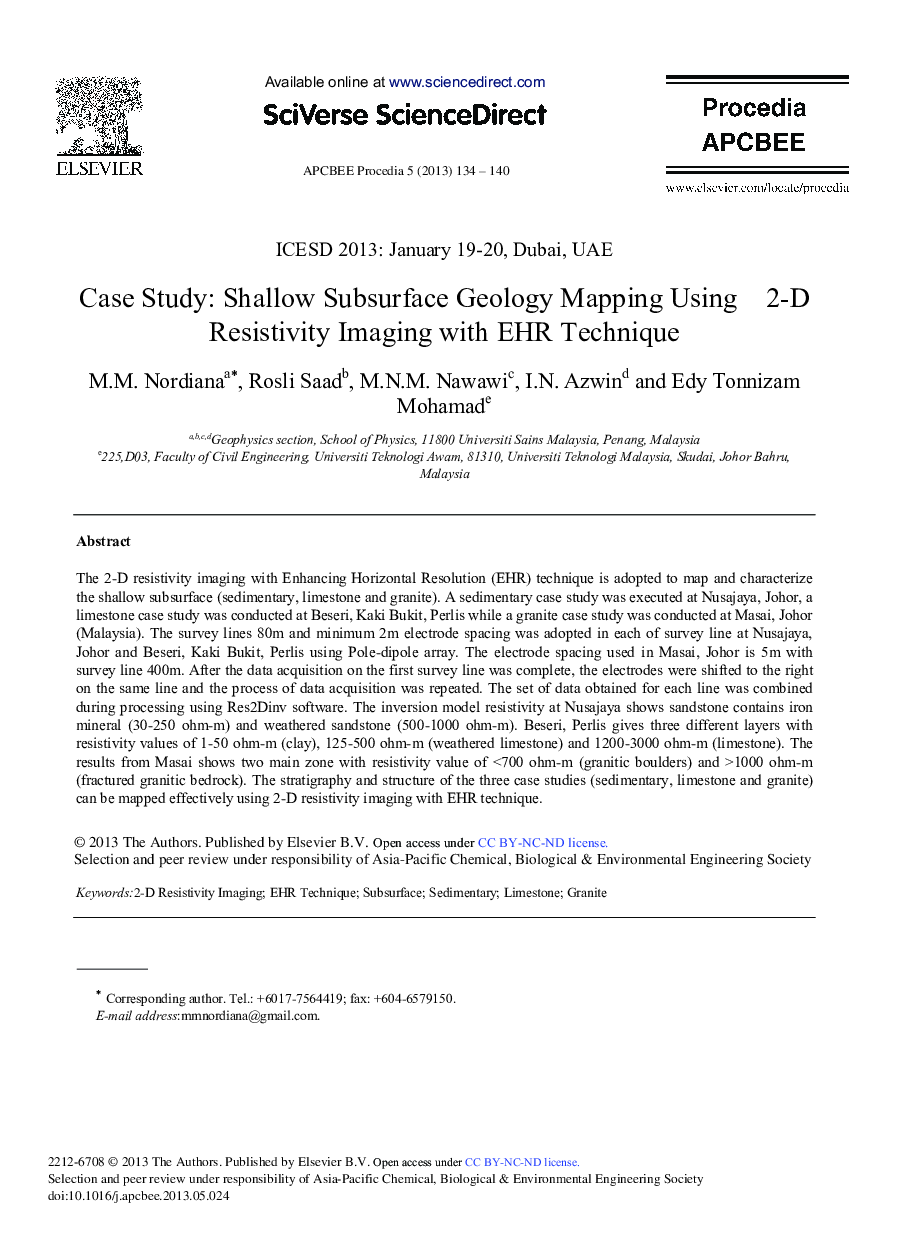| Article ID | Journal | Published Year | Pages | File Type |
|---|---|---|---|---|
| 676576 | APCBEE Procedia | 2013 | 7 Pages |
The 2-D resistivity imaging with Enhancing Horizontal Resolution (EHR) technique is adopted to map and characterize the shallow subsurface (sedimentary, limestone and granite). A sedimentary case study was executed at Nusajaya, Johor, a limestone case study was conducted at Beseri, Kaki Bukit, Perlis while a granite case study was conducted at Masai, Johor (Malaysia). The survey lines 80m and minimum 2m electrode spacing was adopted in each of survey line at Nusajaya, Johor and Beseri, Kaki Bukit, Perlis using Pole-dipole array. The electrode spacing used in Masai, Johor is 5m with survey line 400m. After the data acquisition on the first survey line was complete, the electrodes were shifted to the right on the same line and the process of data acquisition was repeated. The set of data obtained for each line was combined during processing using Res2Dinv software. The inversion model resistivity at Nusajaya shows sandstone contains iron mineral (30-250 ohm-m) and weathered sandstone (500-1000 ohm-m). Beseri, Perlis gives three different layers with resistivity values of 1-50 ohm-m (clay), 125-500 ohm-m (weathered limestone) and 1200-3000 ohm-m (limestone). The results from Masai shows two main zone with resistivity value of <700 ohm-m (granitic boulders) and >1000 ohm-m (fractured granitic bedrock). The stratigraphy and structure of the three case studies (sedimentary, limestone and granite) can be mapped effectively using 2-D resistivity imaging with EHR technique.
